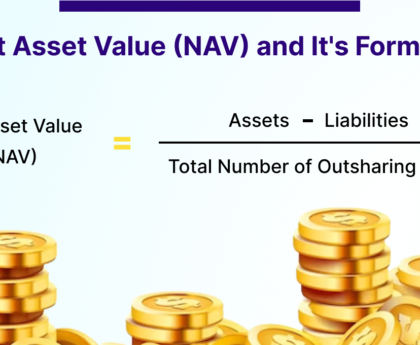Mutual funds are one of the most prominent investment options out there and are increasing in popularity even more. So in today’s article, we will talk about Mutual funds, and mainly Debt mutual funds.
What are Mutual Funds ?
A Mutual Fund is a professionally managed fund, where money is pooled from several investors to invest in Securities. Mutual funds are usually distinguished based on their principal investment. Such as Money market funds, bonds or fixed-income funds, and equity funds. They may have a combination of some of them, which is known as a hybrid fund. Also, you get a wide variety of options while investing in mutual funds as there are Mutual funds based on an index known as an index fund, you also find mutual funds that are based on a certain sector. The person who manages the Mutual fund is known as the fund manager. The average return on mutual funds falls somewhere between 8-12%. But some may go as high as 30-35% if you’re lucky enough. The main advantages of the mutual fund include low risk, professional management, and diversification. A mutual fund is increasingly becoming a favored choice of investors as it doesn’t require much time to research, you just have to find a good fund and you start with as low as ₹100 with SIP.
A Mutual Fund is a professionally managed fund, where money is pooled from several investors to invest in Securities. Mutual funds are usually distinguished based on their principal investment. Such as Money market funds, bonds or fixed-income funds, and equity funds. They may have a combination of some of them, which is known as a hybrid fund. Also, you get a wide variety of options while investing in mutual funds as there are Mutual funds based on an index known as an index fund, you also find mutual funds that are based on a certain sector. The person who manages the Mutual fund is known as the fund manager. The average return on mutual funds falls somewhere between 8-12%. But some may go as high as 30-35% if you’re lucky enough. The main advantages of the mutual fund include low risk, professional management, and diversification. A mutual fund is increasingly becoming a favored choice of investors as it doesn’t require much time to research, you just have to find a good fund and you start with as low as ₹100 with SIP.
What are Debt Mutual Funds?
A Debt fund or bond fund is also a type of mutual fund. This fund invests in debt securities such as bonds, treasury bills, etc. Debt funds provide you with regular dividends, that is interest payments from underlying securities also one receives periodic realized capital appreciation. Debt funds provide a source of regular income and also sometimes the dividend is paid more frequently, even higher as compared to buying individual bonds.
A Debt fund or bond fund is also a type of mutual fund. This fund invests in debt securities such as bonds, treasury bills, etc. Debt funds provide you with regular dividends, that is interest payments from underlying securities also one receives periodic realized capital appreciation. Debt funds provide a source of regular income and also sometimes the dividend is paid more frequently, even higher as compared to buying individual bonds.
What are types of Mutual Funds?
There are different types of debt mutual funds the list of which is given below:
There are different types of debt mutual funds the list of which is given below:
Credit rating and safety level in Debt mutual funds –
While investing in any Debt mutual fund one needs to understand the credit rating and related safety to understand the risk that you would be bearing by investing in that debt mutual fund. Also usually higher the safety, the lower the yield, and the lower the safety higher the yield so one needs to make sure that they research properly and then invest their hard-earned money.
While investing in any Debt mutual fund one needs to understand the credit rating and related safety to understand the risk that you would be bearing by investing in that debt mutual fund. Also usually higher the safety, the lower the yield, and the lower the safety higher the yield so one needs to make sure that they research properly and then invest their hard-earned money.
Conclusion –
We have this article explained in detail about debt mutual funds and all the things related to debt mutual funds one needs to know. Hope the article helped you, and make sure that you research properly and then invest.

